This could be considered Part 2 of – “My gosh, what has Cambo done”? If we jog our memory back to last summer, we saw the release of one of the grooviest products we’ve seen in some time, the Cambo Actus, an unbelievably small view camera for 35mm DSLR and mirrorless cameras.
http://205.186.138.113/plesk-site-preview/captureintegration.com/205.186.138.113/first-look-cambo-actus/
While that tiny little view camera has been a hit with our smaller format clients, as one of the world’s most prominent providers of large sensor photographic solutions, we have eagerly awaited the arrival of the big brother to our tiny little Actus friend, and now it is here – the Cambo Actus DB.
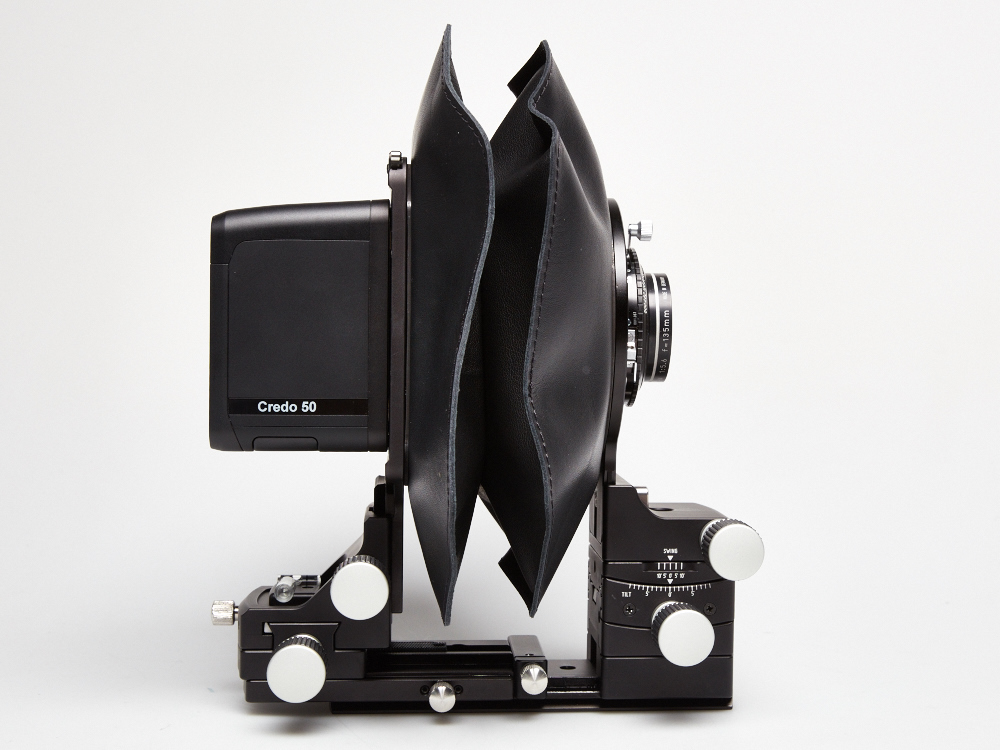
Wait a minute ….. it’s the same size as the other one!
We have to admit that at first we thought Cambo accidentally shipped the original Actus, rather than the Actus DB. The box was the same size as the box for the original Actus. But when we opened the box, we found that…indeed it was the Actus DB and indeed it was the same unbelievably small size. And for a view camera, it was …. almost cuddly.
But – there certainly are differences between the Cambo Actus and the Actus DB, and we’re going to go through them. After all, the Actus DB is designed to accommodate a back end capture device (as in the above example, a Leaf Credo 50) that contains CCD/CMOS Sensors as large as 54mm x 40mm. So something has to be different to handle that, right?
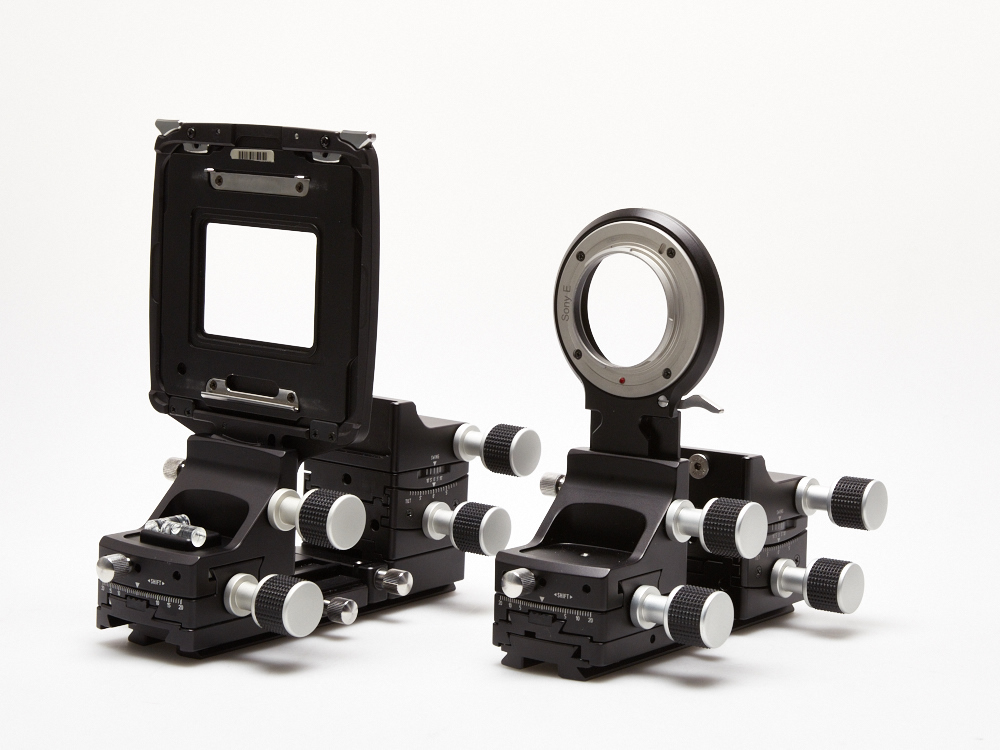
Little Brother and Big Brother, Cambo Actus and Cambo Actus DB
As you see from the above side by side, from a size standpoint, there’s hardly any size difference at all. The main difference that jumps out is that the Cambo Actus DB incorporates a capture device mounting interface that is designed to accept digital backs, meaning any digital back from a Phase One, Leaf, Hasselblad, Sinar, etc. So it has a slightly larger mounting interface that is square, rather than a front body circular bayonet found on the frontside of a Canon, or Sony, or Nikon DSLR or mirrorless, etc. The clever detail is that the mounting interface is the same one that is found on the Cambo Wide Technical Camera systems.
https://www.digitalback.com/product/cambo-wide-rs-rearplate/

The Bellows for the Cambo DB next to the original Cambo Actus Bellows
The interface adapters come in the following camera interface mounts:
* Contax 645 AF
* Mamiya AFD/DF
* Phase One AFD/DF
* Hasselblad V Series (500 Series)
* Hasselblad H1/H2/H3/H4/H5
* Rollei/Sinar Hy6/Leaf AFi
The other visually noticeable difference between an Actus and an Actus DB is that the front standard that accommodates the various lensboards sits higher, so that it can line up centered respective to the larger format sensor sitting at the back-end of the camera. As you can see below, the base foundation block for the front standard is thicker on the Actus DB. Above that, the remaining elements are exactly the same size as the original Actus.
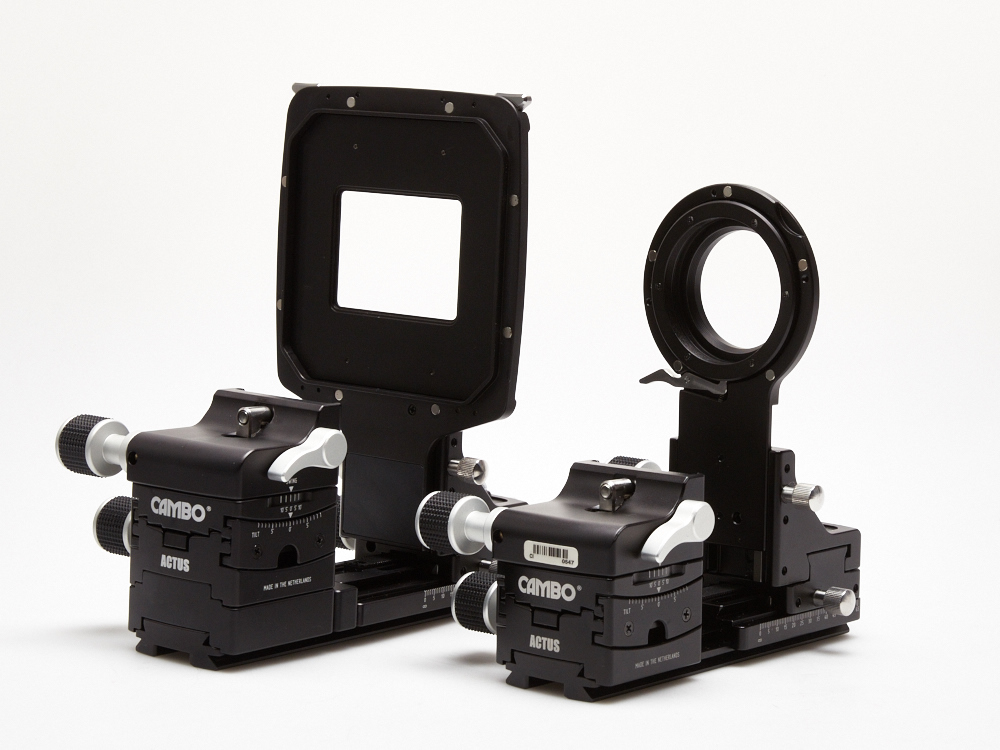
Front View – Cambo Actus DB on the left, original Cambo Actus on the right
So you can see the dimensions are stunningly similar, despite the Actus DB being equipped to handle medium format, rather than 35mm and smaller formats. And the difference in weight is tiny – with the original Actus weighing in at 2.05 lbs and the Actus DB at 2.55 pounds (with camera interface panel). And that pretty much covers the size and weight differences.
On to the functional differences. Cambo has been listening to some of the input for the original Actus product in preparation for the Actus DB, and the concept of the Actus DB itself presented some interesting dilemmas to solve. Let’s focus on some of those. The Actus DB, due to the position of the digital back that would sit on the rear standard, offers leveling tools in the basin of the rear standard below the digital back. This is possible because of the roughly squarer shape of the digital back, so if you rotate the digital back to shoot in vertical orientation, there won’t really be much difference in the clearance between the underside of the digital back and the basin of the rear standard itself. This then allows space to insert bubble levels and be able to view them. Not the case with the original Actus, since the rectangular design of most camera bodies means that in vertical orientation, there wouldn’t be enough room to insert those bubble levels, let alone be able to view them. This is a nice addition to the Actus DB.
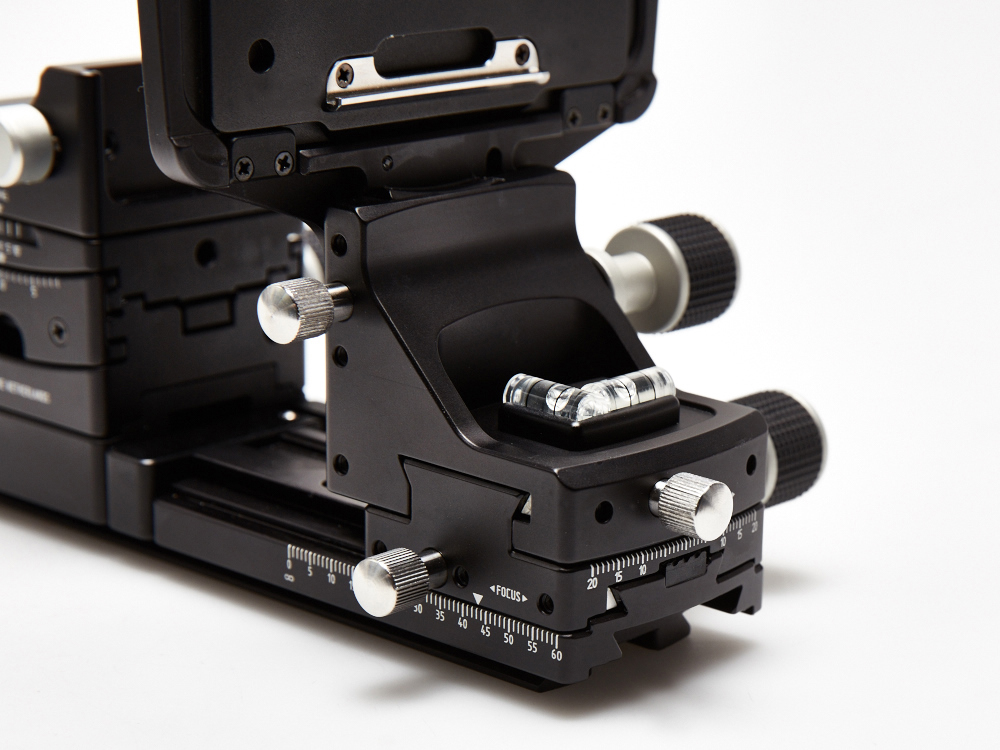
A Level Headed Decision
Now, onto another difference and one that was necessary to solve a thorny issue that developed from a feature of the Actus DB. While you can mount a wonderful assortment of lenses on the original Actus, (Hasselblad V, Mamiya RB/RZ, Mamiya 645, Pentax 645, Pentax 6×7, Schneider, Rodenstock, leica R, M39, Nikon F – and soon, Canon), due to the sensor being enclosed in a camera body, there are limitations to how wide a lens one can shoot, even with the mirrorless bodies. No such limitations with the Actus DB. Since it is not enclosed in a camera body, you can push the rear optic of a lens much closer to the sensor/imaging plane, which allows for infinity focus to be accomplished with much wider lenses than the original Actus.
So, there’s good news here and bad news. The good news is that in the same way we have seen with technical cameras like the Cambo Wide family, there are amazing optics available from Schneider Kreuznach and Rodenstock that are as wide as 23mm (which is – unshifted – equivalent to a 15mm lens on a full frame 35mm camera). So this turns the Cambo Actus DB into a true studio/landscape hybrid product. It’s a great studio view camera option for a digital back to mount to for product photography, but also, due to the ability for compressed distance between the rear optic and imaging plane, becomes a very capable landscape view camera for digital back owners.
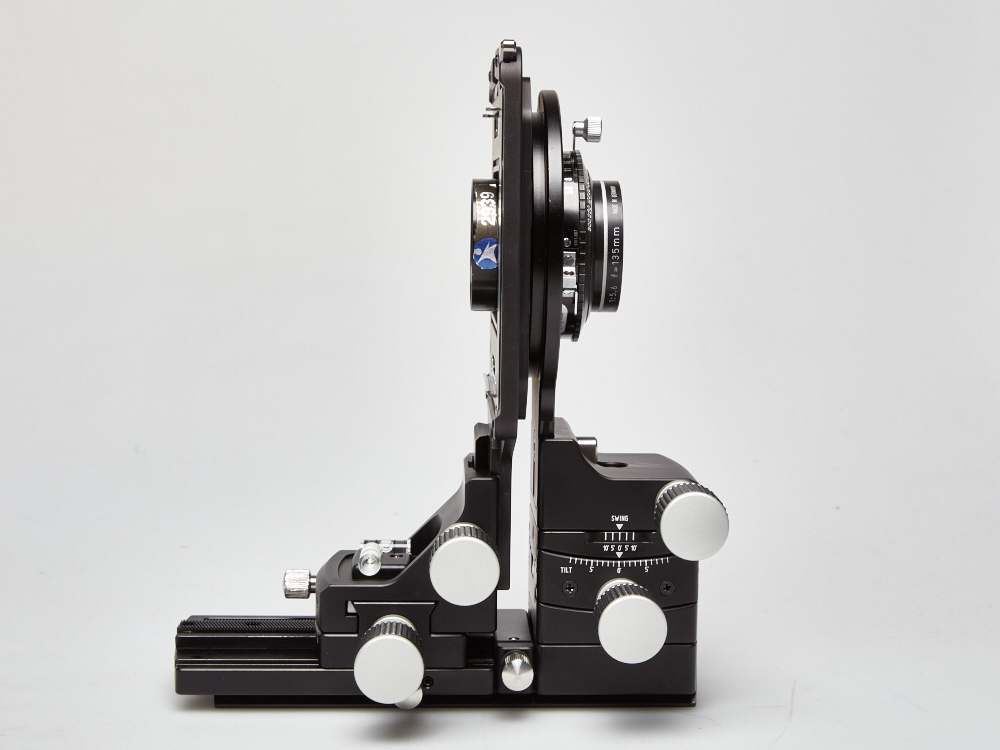
One of the very worst Oops’s possible
The bad news is that yes, you can indeed move the rear optic much closer to the sensor plane itself. But we thought this was good news? And it is good news. But you can actually move the rear optic – brace for impact – right into the sensor of the digital back itself – if the rear optic is small enough to fit inside the interface opening! Well…..that would be an unfortunate turn of events, wouldn’t it? Hey, I’m out in the field focusing my little Schneider wide lens on that tower far off in the distance, and then ….. crack!
This doesn’t happen with a Cambo WRS, because the lenses are mounted in a helicol focusing lenspanel that fixes the rear lens position and pre-adjusts each individual lens for infinity focus. With the Actus DB, you have more freedom to focus that lens however you see fit, but this freedom comes, not with a price, but a responsibility. And it required some ingenuity from Cambo to solve this problem.
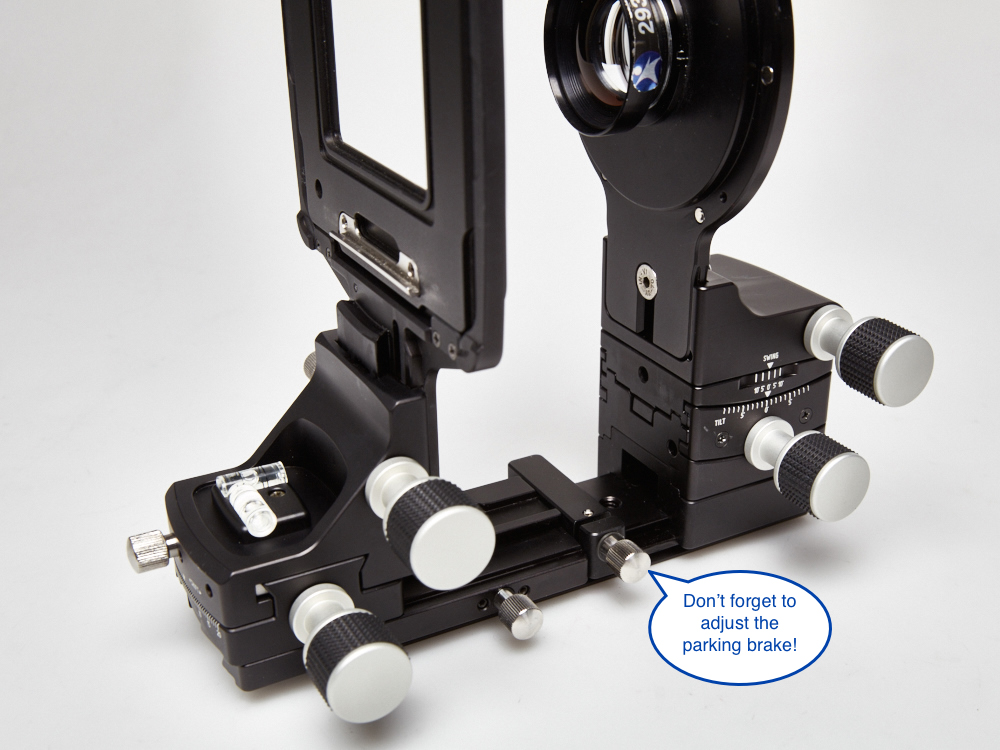
A simple and easy solution to an important problem
Another difference between the original Actus and the Actus DB is the invention of an adjustible brake for the focusing rail. If you’re going to shoot wide lenses with the Actus DB, you must know that this brake has to be adjusted so that the rear optic of the lens doesn’t accidentally hit the digital back sensor. A simple, easy solution that makes sense and allows us to still then be able to get those wide shots we want.
What we also found is that the tension for the movements is increased. There is more bite to the movements, which indicates the gearing for the Cambo Actus DB is more robust. While the original Actus feels smoother, making the same movement on the Actus DB (for example, a tilt, or a fine focus movement) has the feel that there is more holding power with the gearing, which makes sense, with the larger format digital back sitting behind it. Rendering more pixels also means more required precision, and the Actus DB feels like it delivers more of that than the original Actus.
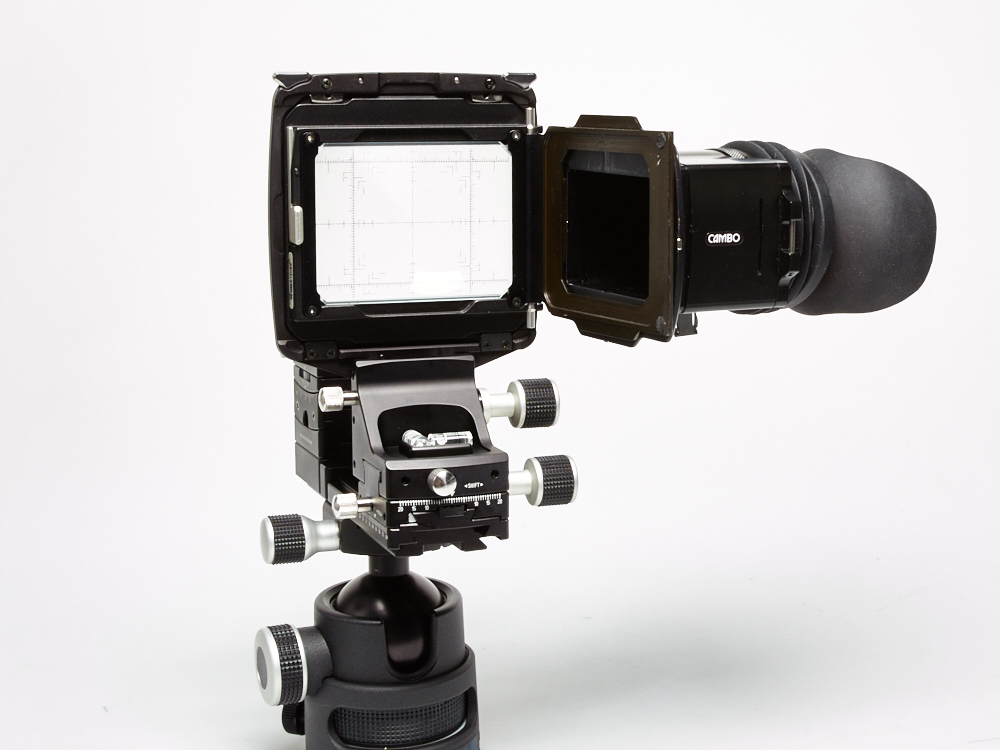
Old school, but good school
Some final considerations… While the original Actus primary coup de grace was enabling your Canon, Nikon, Sony, Fuji, etc small format camera to have full onboard movements with an amazing variety of lenses, shooting ultra wide was one limitation. The strong point of the Actus DB is that it ups the ante when it comes to shooting with larger sensors and more pixels (currently up to 80 megapixels) on an incredibly small view camera with extremely wide lenses. But that muscle comes at a price. Since the digital back has no shutter, the lenses themselves that can work with the Actus DB must have their own – manual, not electronic – shutter. Which means those Hasselblad and Mamiya lenses, etc, aren’t on the menu. This is primarily a vessel for high resolution Rodenstock and Schneider lenses for now (an electronic controller for Canon lenses is in development).
What this also means is that – as is the case with the Cambo Wide Technical Cameras – unless your digital back has a usable Live View, your only means for focus through the lens is via a removable ground glass. What this really means is that the digital back you have on the rear of the Actus DB should ideally have a decent Live View capability, or minimally have a high resolution LCD screen for review.
*** Cambo Actus DB – Final Tally
* Pros
– Tiny size and weight for a fully functional view camera
– Accepts all digital backs
– Can shoot everything from macro studio to scenic landscape panoramas
– Extremely easy, simple, and ergonomically friendly
* Cons
– Not quite as versatile from a lens selection standpoint as the original Actus
Cambo Actus DB View Cameras have now arrived in our inventory and are available to ship today. Pricing for the Camera Body is $2,799, size 0 and 1 lensboards start at $159.
Cambo Actus Store
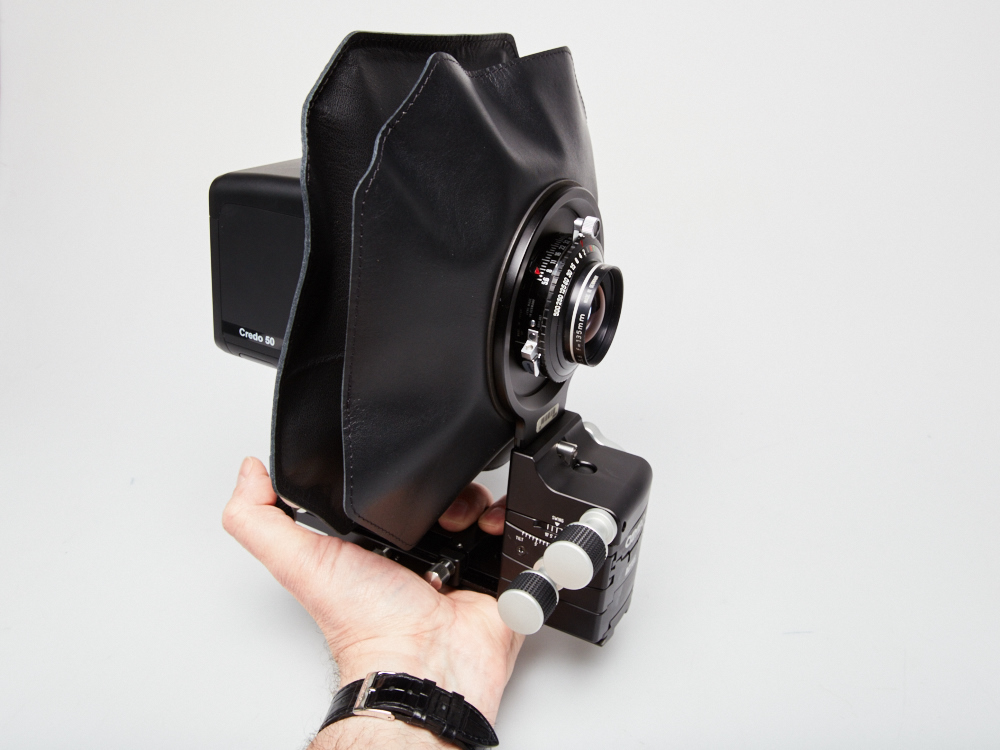
The Cambo Actus DB is a very handy little View Camera!